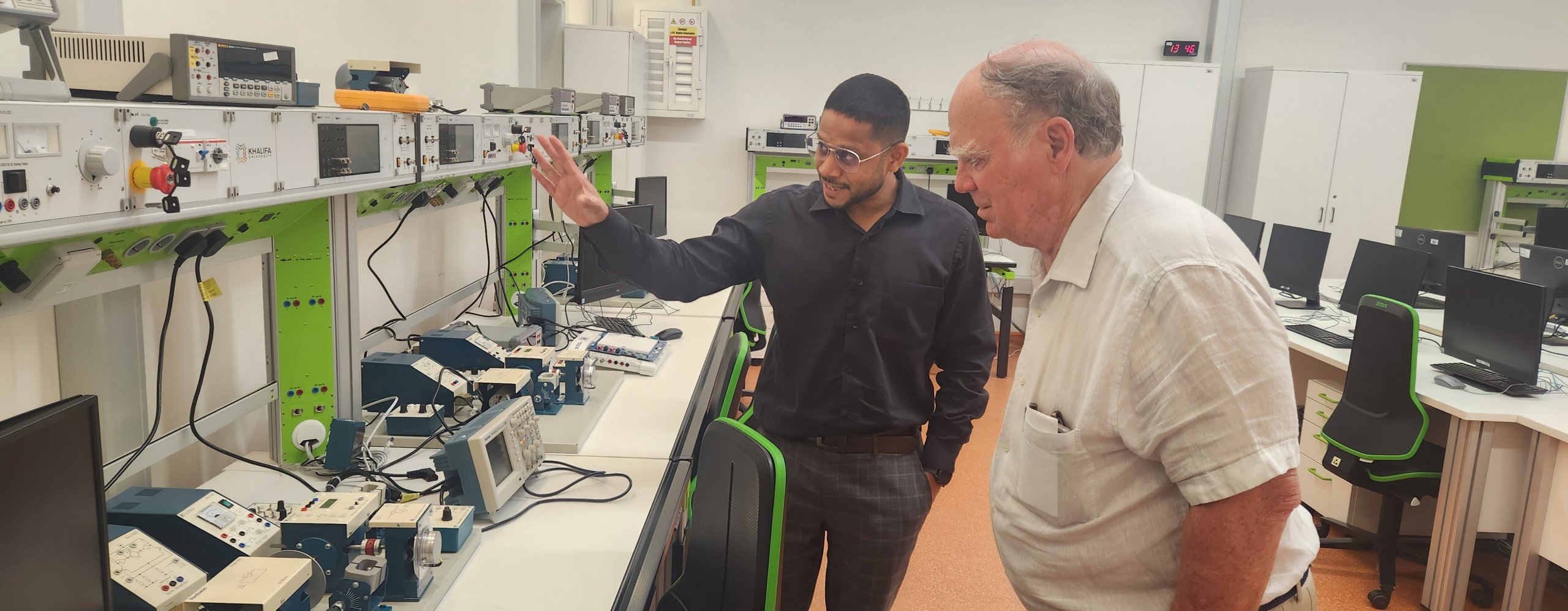Navigating the Future of Urban Transit with Battery Electric Buses

Research develops model for integrating battery electric buses into urban networks considering optimization for cost, utility and emissions
As urban centers grapple with the twin challenges of air pollution and climate change, electrifying public transport has emerged as a key strategy. Battery electric buses (BEBs) stand at the forefront of this transformation, promising a quieter, cleaner, and more sustainable future for city transit systems.
BEBs are emerging as the preferred option for urban transit due to their zero tailpipe emissions, energy efficiency and reduced noise pollution.
A team of researchers including Khalifa University’s Prof. Ehab El-Saadany, Director of the Advanced Power and Energy Center, recognized the challenges facing the implementation of electric buses and developed a generic optimization model for cost, utility impact, and greenhouse gas emissions. The model optimizes the sizing and location of charging infrastructure, onboard battery capacity, and charging schedule, and contributes to ongoing research efforts to advance the use of BEBs in urban transit. The model also offers numerous contributions for charging-system design and scheduling, with results published in Energy.
Despite BEB representing nearly 4.5% of all bus sales in 2022 , BEBs face hurdles to continued adoption, particularly regarding how long they can operate between charges. This is known as their availability ratio. En-route opportunity charging offers a solution, allowing for uninterrupted service without large onboard batteries. However, these fast-charging methods can strain power grids and incur higher costs if conducted during peak electricity demand periods.
The research team applied its model to Guelph, a complex multi-hub transport network in Ontario, Canada. The model developed is a sophisticated optimization model that balances cost, utility, and emission factors for battery electric buses, including a detailed analysis of fleet configurations, charging schedules, and infrastructure needs. It operates within the constraints of the utility grid, considering electricity tariffs and associated greenhouse gas emissions.
“The ideal BEB system for Guelph requires seven charging stations and a uniform fleet of 55 buses each with a 150 kWh battery,” Prof. El-Saadany said. “It shows a substantial annual system cost, with the fleet itself being the largest expenditure. Still, operational costs, primarily driven by electricity, are also significant, suggesting that better electricity rates could yield considerable savings.”
The model demonstrated practicality and flexibility when applied to Guelph, strategically selecting charging-station locations shared by multiple routes and optimally combining en-route with overnight charging strategies to minimize costs and ensure system efficiency.
“The proposed charging strategy in our model satisfies several concepts: All chargers are shared between buses, each bus can choose to charge from any of the available chargers (with different power ratings) along their routes, partial charging is possible, and each charging event should be continuous,” Prof. El-Saadany said. “All these concepts ensure that the resulting charging strategy is reliable and optimizes the utilization of resources.”
The model’s adaptability to transit-specific data standards bodes well for widespread application but the research team recognizes further research is needed to incorporate operational uncertainties, the robustness of the transit system under disruptions, and the effects of battery degradation over time.
Integrating battery electricity buses demands meticulous planning and optimization. This study’s model offers a robust framework for transit authorities to design and implement BEB systems that are cost-effective, environmentally friendly and reliable.
Jade Sterling
Science Writer
24 November 2023




